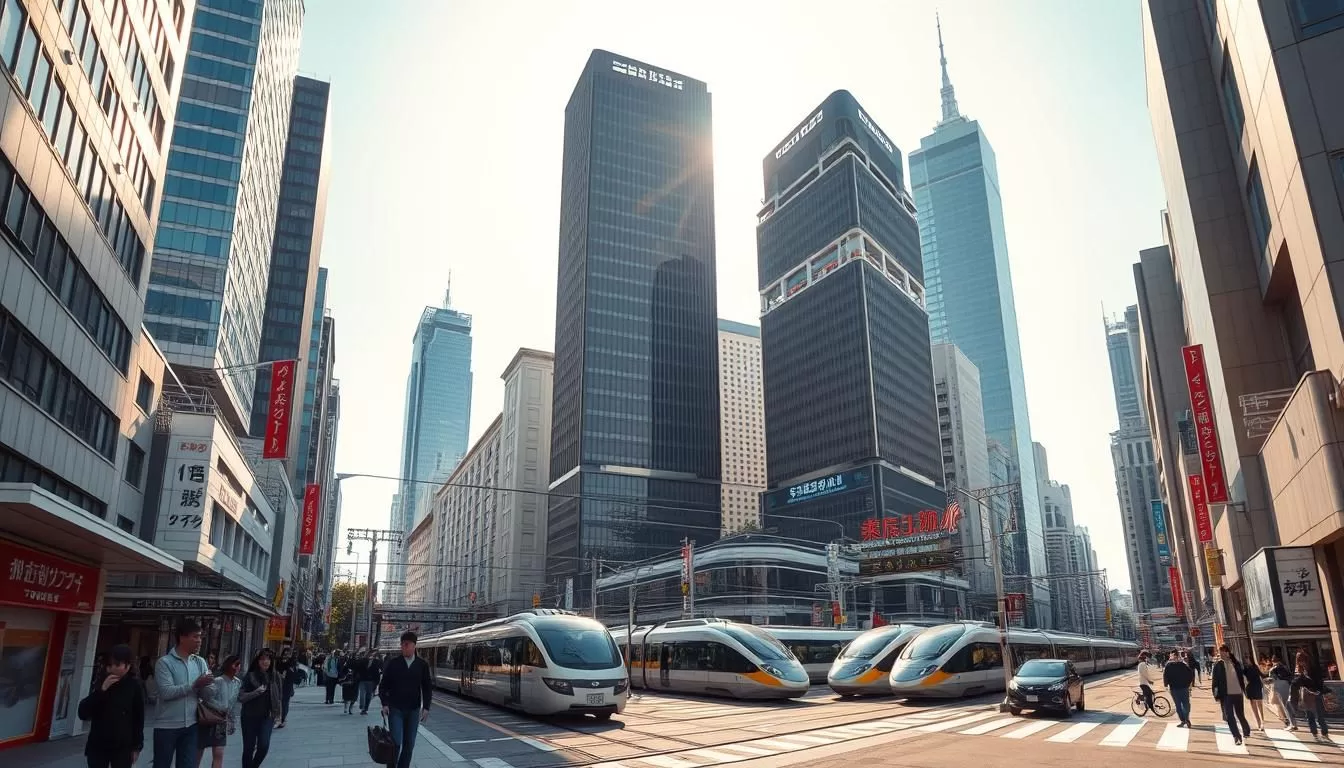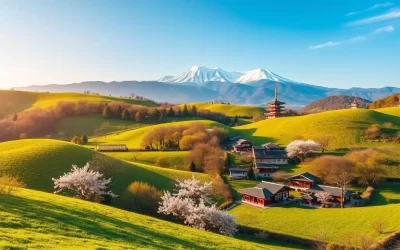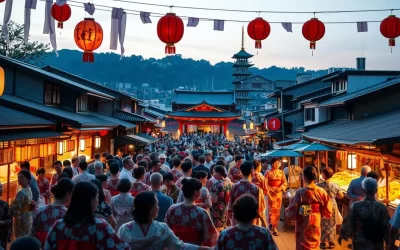Once a mere stopover on the way to Kyoto, Shinagawa has evolved into a vibrant neighborhood in the heart of Tokyo, near Haneda Airport, with direct connections to Narita Airport.
This bustling district offers a unique blend of historical significance and modern attractions, making it an ideal destination for travelers seeking an authentic experience.
From the Shinagawa Aquarium to traditional shopping arcades, and from the faux Fuji at Shinagawa Shrine to the beautiful waterways of Tennozu Isle, you’ll find a range of activities to suit all interests.
This comprehensive guide will walk you through the top attractions in Shinagawa-ku, helping you make the most of your trip to this often-overlooked Tokyo neighborhood.
Discovering Shinagawa: Tokyo’s Hidden Gem
Discover the charm of Shinagawa, a Tokyo district that seamlessly blends historical significance with modern appeal. As you explore this vibrant area, you’ll find that Shinagawa is more than just a stop on your journey; it’s a destination in its own right.
Historical Significance and Modern Appeal
Shinagawa has a rich history, with landmarks and cultural sites that reflect its importance in Tokyo’s heritage. At the same time, it boasts a modern infrastructure, making it an attractive spot for both history buffs and those looking for contemporary experiences. The district’s unique blend of old and new is part of its charm, offering something for every visitor.
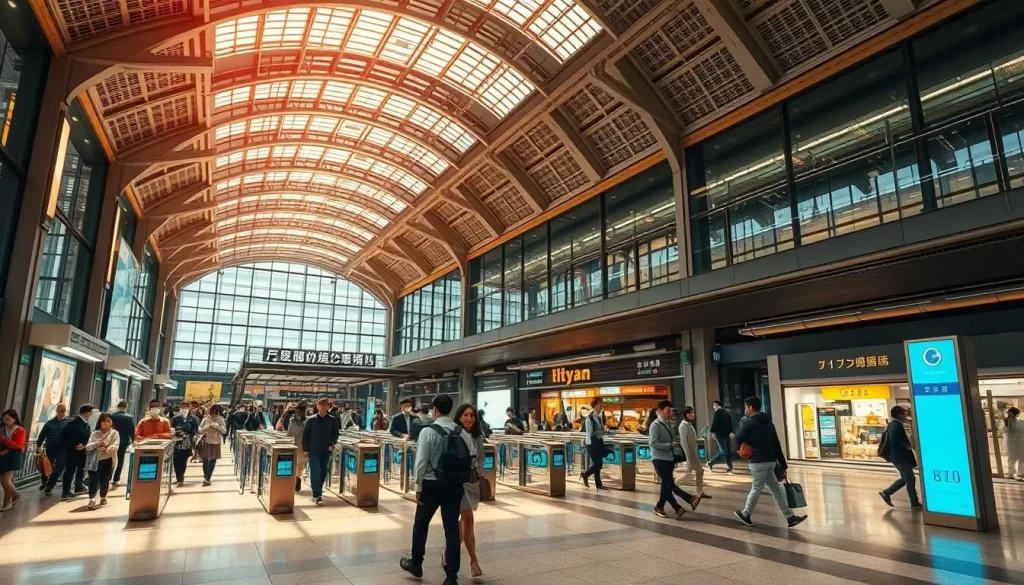
Getting to and Around Shinagawa
One of the key advantages of visiting Shinagawa is its excellent transportation links. Shinagawa Station is one of Tokyo’s major transportation hubs, serving several train lines, including the JR Yamanote Line, JR Keihin-Tohoku Line, and Tokaido Shinkansen. This connectivity makes it easy to reach other parts of the city and beyond.
| Transportation Line | Destination | Travel Time |
|---|---|---|
| JR Yamanote Line | Central Tokyo | Approximately 30 minutes |
| Tokaido Shinkansen | Other Japanese cities | Varies by destination |
| JR Keihin-Tohoku Line | Other Tokyo districts | Approximately 15-20 minutes |
To navigate Shinagawa, you can easily walk or take short bus rides, with most attractions within 15-20 minutes of Shinagawa Station. The area is pedestrian-friendly, and clear signage in multiple languages helps you find your way. Consider purchasing a Suica or Pasmo card for seamless travel on trains and buses throughout the area.
Shinagawa Aquarium: Underwater Wonders
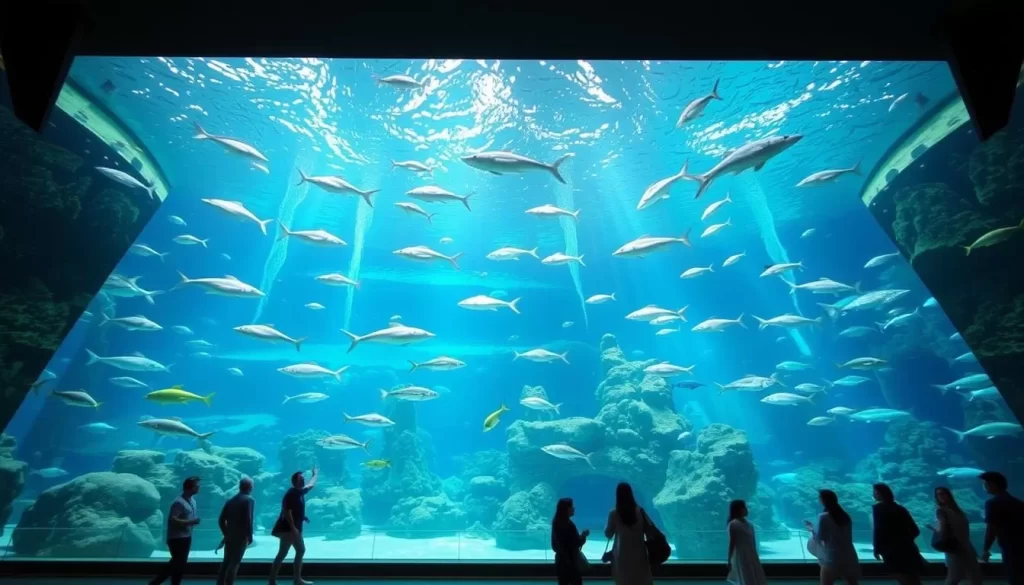
Explore the fascinating world beneath the waves at Shinagawa Aquarium. Located in Tokyo, this aquarium is a must-visit for anyone interested in marine life. With a variety of exhibits and interactive experiences, you’ll have a great experience exploring the underwater world.
Highlights and Marine Life Exhibits
Shinagawa Aquarium is home to a diverse range of marine life, from colorful fish to intelligent marine mammals. You can witness the spectacular dolphin and sea lion shows, which showcase their natural behaviors and trained performances. The aquarium also features interactive touch pools where you can safely touch starfish, small sharks, and other friendly marine creatures under staff supervision.
The feeding demonstrations offer a unique experience to watch sharks, penguins, and other marine creatures during their mealtime while learning about their diets and hunting strategies.
Shows and Special Events
Throughout the year, Shinagawa Aquarium hosts various events and activities, including seasonal celebrations and themed activities. You can plan your visit to coincide with the shows and demonstrations, making the most of your time at the aquarium. For the best experience, check the daily schedule upon arrival to plan your day around the shows and events that interest you most.
- You can time your visit to coincide with the aquarium’s spectacular dolphin and sea lion shows.
- The feeding demonstrations offer a unique experience to watch marine creatures during their mealtime.
- Throughout the year, the aquarium hosts special seasonal events and themed activities.
- Interactive touch pools provide hands-on experiences where you can safely touch marine creatures.
- For the best experience, check the daily schedule upon arrival.
Tennozu Isle: Art and Waterfront Charm
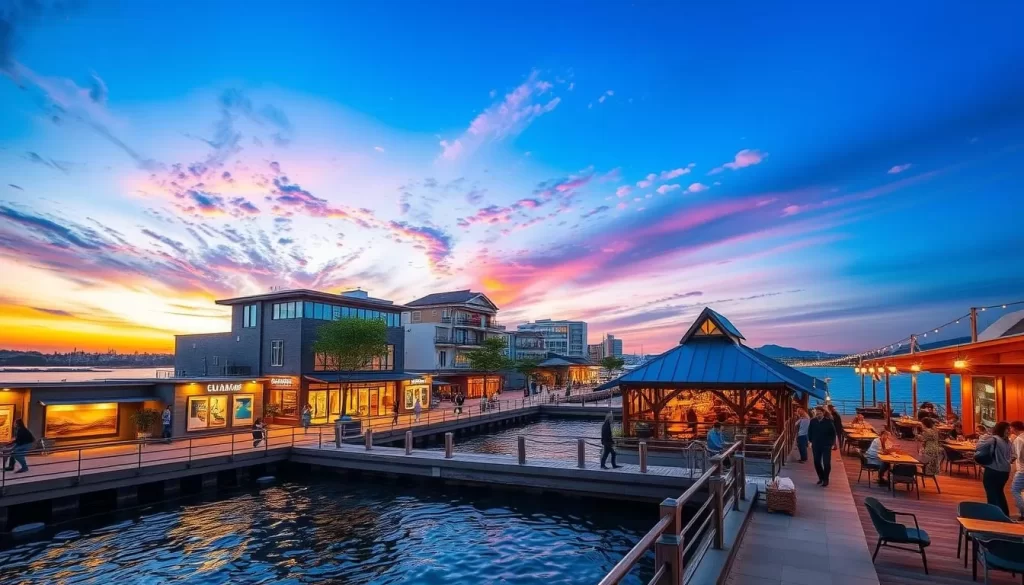
As you step into Tennozu Isle, you’re greeted by a vibrant mix of street art, galleries, and waterfront dining experiences. This area has transformed into a stylish retail and restaurant hub, offering a unique blend of artistic expression and leisure activities.
Street Art and Galleries
Tennozu Isle is a haven for art enthusiasts, featuring a variety of street art and galleries that showcase both local and international talent. The area’s industrial past has been repurposed to create a canvas for artists, making it a fascinating place to explore.
Waterfront Dining and Shopping
The waterfront dining experience at Tennozu Isle is not to be missed, with restaurants offering terraces and large windows that maximize the views of the canal and Tokyo Bay. You can enjoy a range of food options, from casual cafés serving artisanal coffee to upscale restaurants specializing in Japanese and international cuisine. The shopping options are equally impressive, with artisanal craft shops and design-focused boutiques providing a perfect setting to find unique souvenirs and gifts. For a unique experience, consider taking a water taxi to or from Tennozu Isle, combining transportation with sightseeing along Tokyo’s urban waterways.
Tennozu Isle is indeed a stylish area that offers a refreshing shopping and dining experience. With its picturesque views and variety of amenities, it’s a must-visit destination in Tokyo.
Historical Treasures of Shinagawa
As you explore Shinagawa, you’ll uncover a wealth of historical attractions that showcase its rich past. This district is home to numerous ancient shrines and landmarks that are steeped in history and culture.
Shinagawa Shrine and Its Dragon Gate
The Shinagawa Shrine is a must-visit historical site, known for its iconic Dragon Gate. This shrine is a significant cultural landmark that attracts visitors from all over.
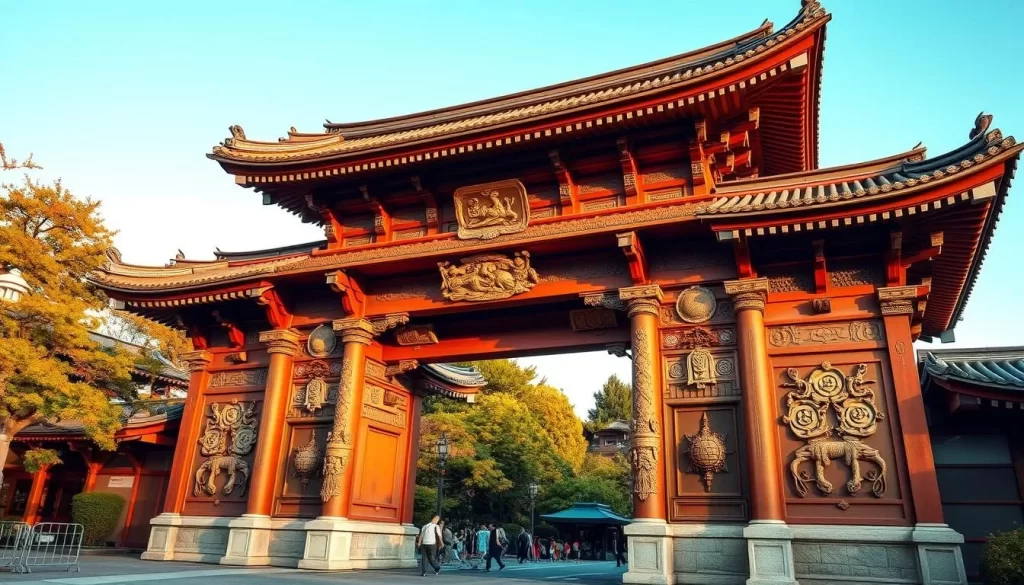
Ebara Shrine: Ancient Spirituality
Located just a few minutes away, Ebara Shrine is another historical treasure that embodies ancient spirituality. Founded in 709, it is one of the oldest religious attractions in the Tokyo area.
- You’ll be amazed by Ebara Shrine’s incredible age, as it was founded in 709, making it one of the oldest religious attractions in the Tokyo area.
- The shrine’s ornate carvings and detailed architectural elements showcase exquisite craftsmanship that has been preserved through time, offering a glimpse into ancient Japanese artistic traditions.
- June is the perfect time to visit when you can witness the shrine’s famous festival, where portable mikoshi shrines are carried through water in a tradition that dates back centuries.
- Unlike many other shrines that were rebuilt or relocated, Ebara Shrine has remained in its original place for over 1,300 years, creating a powerful sense of historical continuity.
- The shrine serves as both a spiritual center and a community gathering place, with locals visiting throughout the year for various ceremonies and personal prayers.
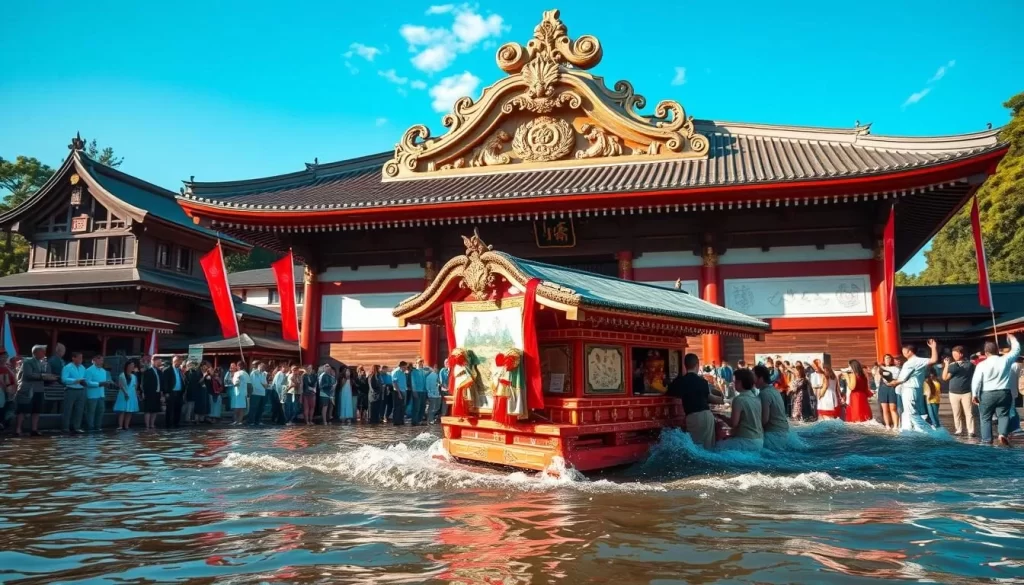
Visiting these historical treasures will give you a deeper understanding of Shinagawa’s rich cultural heritage and its significance as a shrine hub in Tokyo.
Sengakuji Temple: Home of the 47 Ronin

The story of the 47 Ronin is one of Japan’s most famous tales, and Sengakuji Temple is the site where their story comes to life. This historic temple in Tokyo’s Shinagawa ward is a must-visit for anyone fascinated by samurai history and loyalty.
The Famous Samurai Story
The Sengakuji Temple is renowned for its association with the 47 Ronin, a group of samurai who avenged their lord’s death in the early 18th century. The temple is the final resting place of these loyal retainers, and their graves are a major attraction. The graves are a testament to the enduring legacy of the 47 Ronin, symbolizing loyalty and honor.
Annual Festivals and Events
Sengakuji Temple hosts two annual festivals to commemorate the 47 Ronin. The Ako Gishi Sai (47 Ronin Festival) takes place on December 14th, marking the day the ronin completed their revenge mission. During this solemn festival, you’ll witness a procession of people dressed in Edo-period samurai attire, recreating the historical events. The April festival offers a different atmosphere, focusing on celebration and the coming of spring while honoring the 47 ronin’s legacy.
- You can time your visit to coincide with the Ako Gishi Sai (47 Ronin Festival) held annually on December 14th, commemorating the day when the ronin completed their revenge mission.
- During this solemn festival, you’ll witness a procession of people dressed in Edo-period samurai attire, recreating the historical events in a moving tribute to loyalty and sacrifice.
- The April events offer a different atmosphere, focusing more on celebration and the coming of spring while still honoring the 47 ronin’s legacy.
- Both events attract history enthusiasts from across Japan, giving you the opportunity to experience how historical events continue to resonate in contemporary Japanese culture at the right time of year.
- While the ceremonies maintain their traditional solemnity, the festival atmosphere is enhanced by food stalls and vendors, making it an educational yet enjoyable day for visitors of all ages.
Parks and Green Spaces in Shinagawa
Among Tokyo’s bustling wards, Shinagawa stands out with its serene parks and recreational areas. These green spaces offer a tranquil escape from the city’s hustle and bustle, catering to a wide range of interests and activities.
Rinshi no Mori Park: A Forest in the City

Rinshi no Mori Park is a haven for nature lovers, offering a forest-like atmosphere in the midst of the city. You can enjoy walking through its well-maintained trails, observe the local flora and fauna, and experience a sense of calm. The park is particularly popular among locals and visitors alike for its serene ambiance and natural beauty.
Kumin Park: Family-Friendly Recreation

Kumin Park is the perfect place for a family day out, featuring a variety of recreational areas and activities. The park is home to two swimming pools, making it an ideal spot during the summer months. You can also enjoy tennis and baseball, or simply relax in the landscaped gardens and natural areas. With Shinagawa Aquarium located within the park, you can easily combine outdoor activities with an educational marine experience, making the most of your visit.
- The park offers thoughtfully designed recreational areas for visitors of all ages.
- The swimming pools are a refreshing escape from Tokyo’s heat and humidity during the summer.
- Sports enthusiasts can enjoy well-maintained tennis courts and baseball areas.
- The landscaped gardens and natural areas provide peaceful settings for relaxation or picnics.
- Combining outdoor activities with a visit to Shinagawa Aquarium maximizes your family‘s enjoyment.
Unique Museums in Shinagawa-ku, Tōkyō, Japan: Best Things to Do – Top Picks
Shinagawa-ku, Tōkyō, is home to a variety of unique museums that showcase the area’s rich history and cultural heritage. As you explore Shinagawa, you’ll discover that these museums offer a fascinating glimpse into the area’s diverse cultural landscape.
Nikon Museum: A Century of Optical Innovation
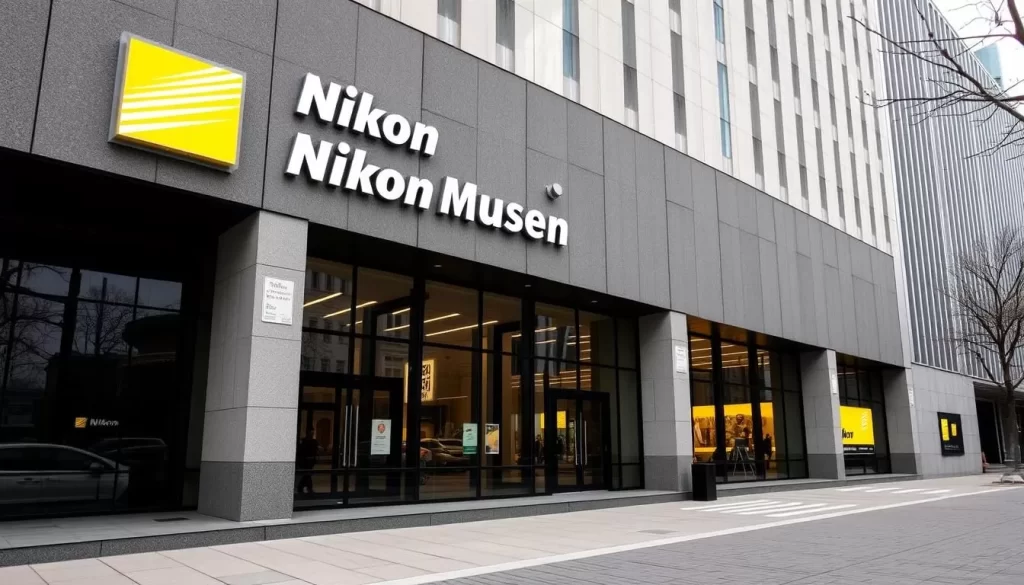
The Nikon Museum is a must-visit for anyone interested in the history of photography and optical technology. With a collection that spans over a century, you’ll journey through time and witness the evolution of Nikon’s innovative products.
Archi-Depot Museum: Architectural Wonders

At the Archi-Depot Museum, you’ll be treated to an array of architectural wonders, showcasing innovative designs and models that highlight the creativity of architects. This museum is a home to an impressive collection of architectural exhibits.
Shinagawa Historical Museum

For a dose of history, head to the Shinagawa Historical Museum, which chronicles the area’s evolution from prehistoric settlements to its period of prosperity as the first post station on the Tokaido Road. You’ll explore the history of Shinagawa through its artifacts and exhibits, learning about the different periods that shaped the area. The museum is a great place to learn about the things that make Shinagawa unique, and how it has developed over time.
- You’ll journey through time at the Shinagawa Historical Museum, which chronicles the area’s evolution from prehistoric settlements evidenced by the Omori Shell Mounds to its period of prosperity as the first post station on the historic Tokaido Road.
- The museum is home to an impressive collection of artifacts that illustrate daily life in Shinagawa throughout different historical periods, giving you a comprehensive understanding of the area’s cultural development.
- One of the museum’s highlights is the full-scale traditional house reconstruction inside the building, allowing you to experience the architectural style and living conditions of Edo-period Shinagawa.
- You’ll discover how Shinagawa’s strategic location between Edo (Tokyo) and western Japan shaped its development and made it a crucial link in Japan’s historical transportation network.
- The museum presents historical information in an accessible way, making it one of the most informative things to do in Shinagawa for visitors interested in understanding the authentic character of the area.
Shopping Districts and Local Markets
From historic shopping streets to nostalgic food alleys, Shinagawa has something for every shopper and foodie. The area offers a unique blend of traditional and modern experiences that showcase the best of Tokyo’s retail and culinary delights.
Togoshi Ginza Shopping Street: Tokyo’s Longest Shopping Arcade
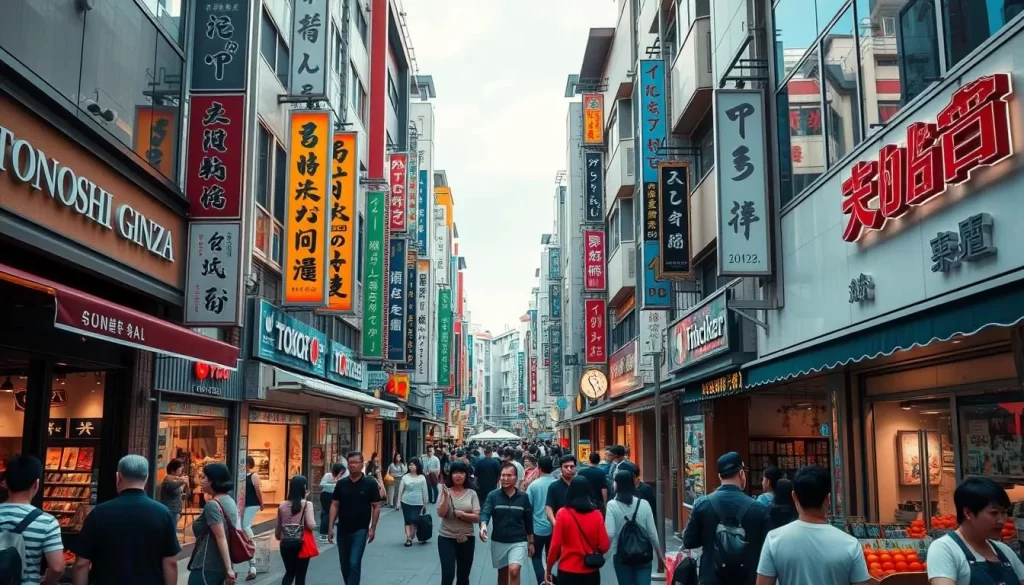
Togoshi Ginza Shopping Street is a must-visit destination for shoppers. As Tokyo’s longest shopping arcade, it offers a diverse range of stores, from fashion boutiques to specialty shops selling local goods. You can spend a leisurely afternoon browsing the various stalls and stores, enjoying the lively atmosphere and taking in the sights and sounds of this vibrant shopping district.
Oimachi Yokocho: Nostalgic Food Alley
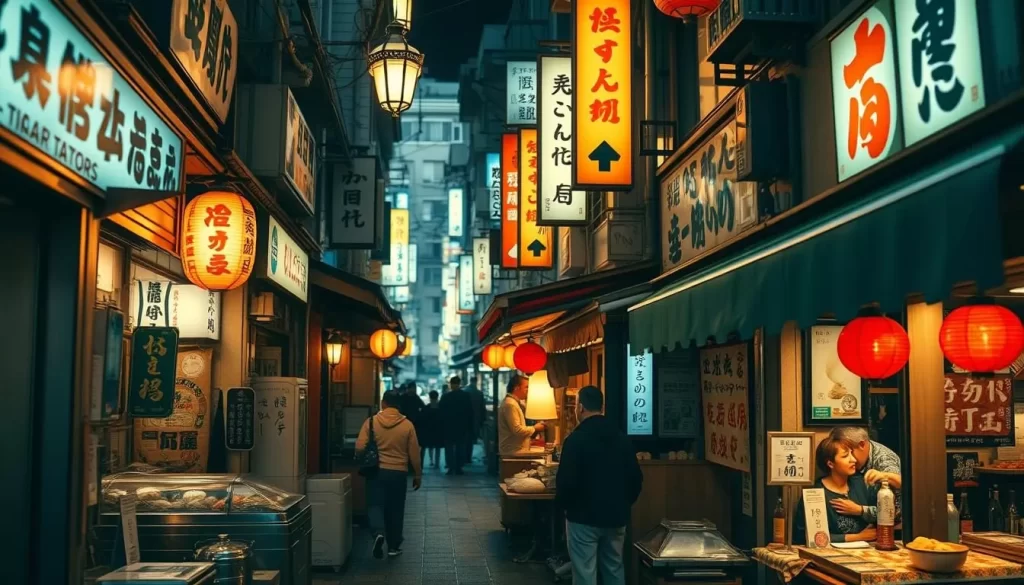
Oimachi Yokocho is a nostalgic food alley that will transport you back in time. This narrow alleyway is lined with traditional izakaya and food stalls, offering an authentic culinary experience that is reminiscent of post-war Japan. You can enjoy a wide range of local specialties, from yakitori (grilled chicken skewers) to fresh seafood, all served in a cozy and intimate setting. The alley’s nostalgic atmosphere makes it a unique place to visit, especially for those looking to experience the traditional side of Tokyo.
As you stroll through Oimachi Yokocho, you’ll feel like you’re stepping back in time, surrounded by the narrow streets and traditional eateries. The alley remains relatively undiscovered by tourists, giving you a more genuine glimpse into how locals socialize and dine. Be sure to try some of the local food and drinks, and enjoy the warm hospitality that Oimachi Yokocho has to offer.
Culinary Delights in Shinagawa
In Shinagawa, you can embark on a gastronomic journey that takes you through traditional Japanese cuisine and beyond. The city’s culinary landscape is diverse, offering a range of food experiences that cater to all tastes.
Sushi and Seafood Experiences
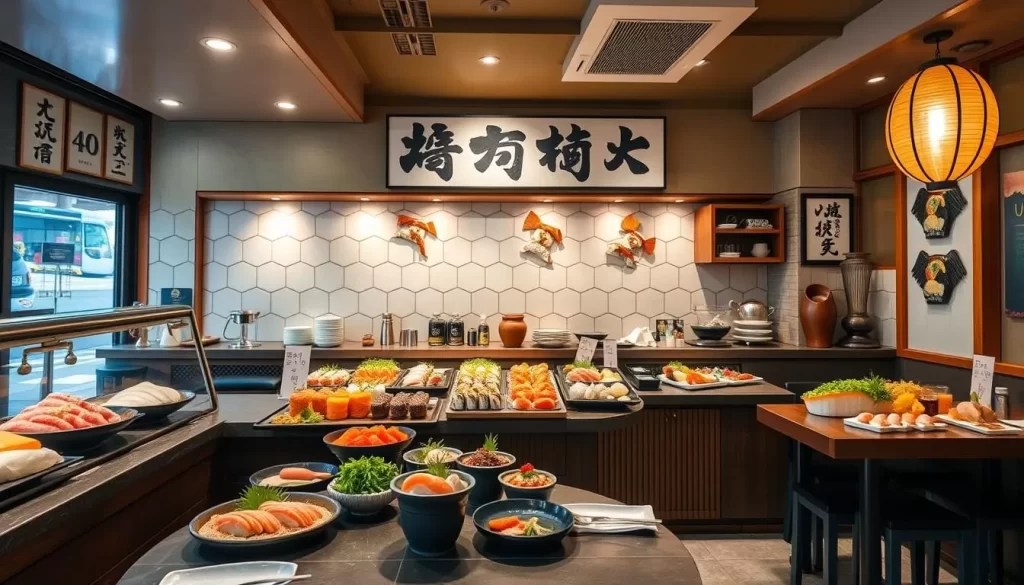
Shinagawa is renowned for its sushi and seafood. You’ll find that it’s a paradise for sushi lovers, with numerous restaurants serving fresh and delicious sushi. The area’s proximity to the sea ensures that the seafood is always fresh, making it a must-visit place for seafood enthusiasts.
Ramen and Local Specialties
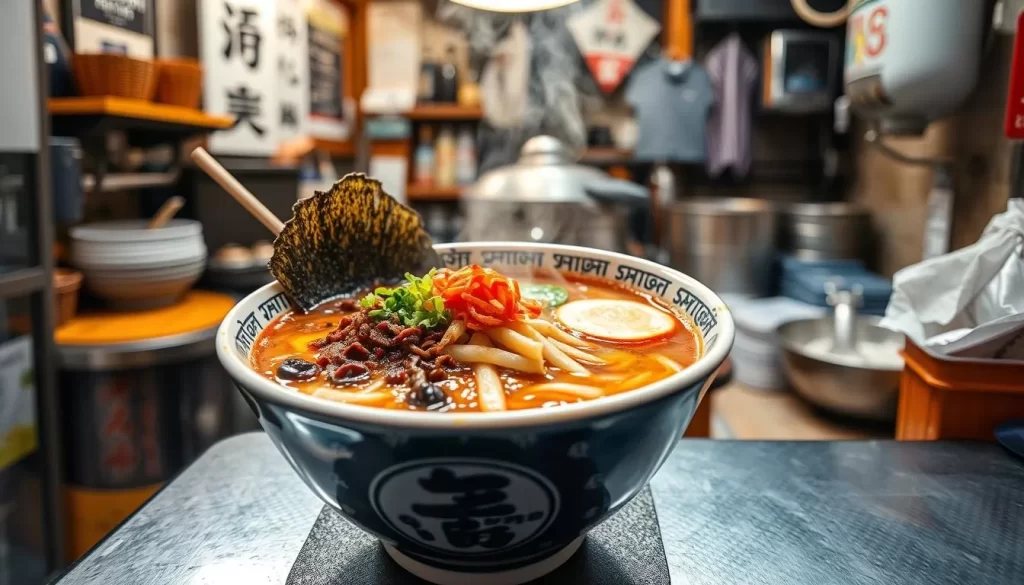
Shinagawa is also a ramen lover’s paradise, with shops specializing in every regional style. From Hakata’s rich tonkotsu broth to Sapporo’s miso-based varieties, you can explore a wide range of ramen experiences. Beyond ramen and sushi, Shinagawa’s culinary scene includes authentic Italian pizzerias and other international cuisines, making it a city where you can sample global flavors prepared with Japanese attention to detail.
The city’s food scene is not just about the usual suspects; it also offers unique local specialties that reflect its historical connection to the sea and its position as the first post town outside of Edo. During summer, you can enjoy kakigori, a Japanese shaved ice dessert elevated to an art form with handcrafted syrups and creative toppings.
Seasonal Highlights and Festivals
From cherry blossoms to winter illuminations, Shinagawa offers a unique experience with each changing season. The area is known for its vibrant festivals and events that take place throughout the year, making it a great destination to visit any time.
Cherry Blossom Viewing Along Meguro River
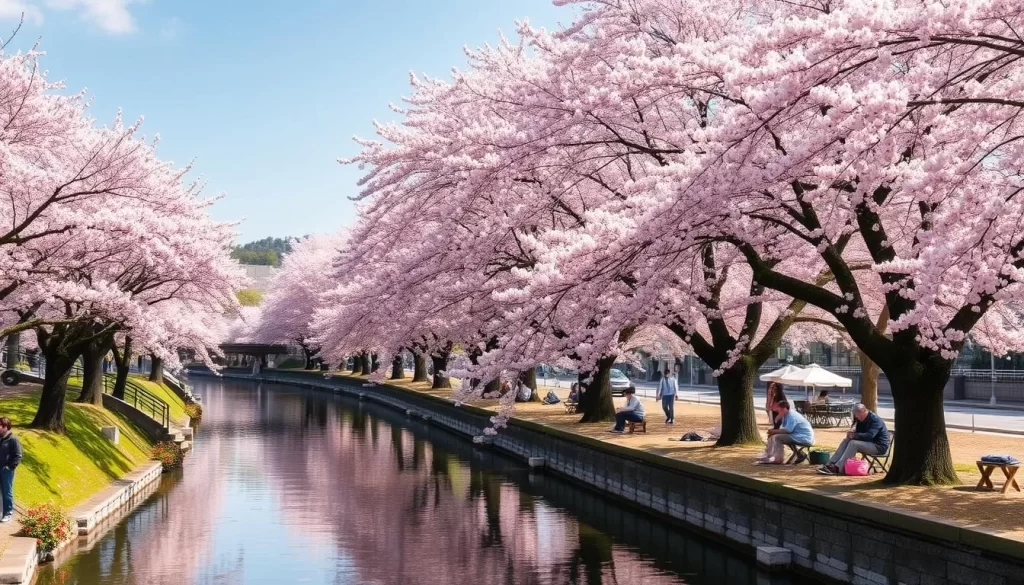
One of Shinagawa’s most beloved springtime activities is cherry blossom viewing along the Meguro River. The riverbank is lined with hundreds of cherry blossom trees, creating a picturesque landscape that attracts visitors from all over. You can take a leisurely stroll, enjoy a picnic under the blossoms, or simply sit back and enjoy the beauty of nature.
Tokyo Mega Illumination and Winter Events
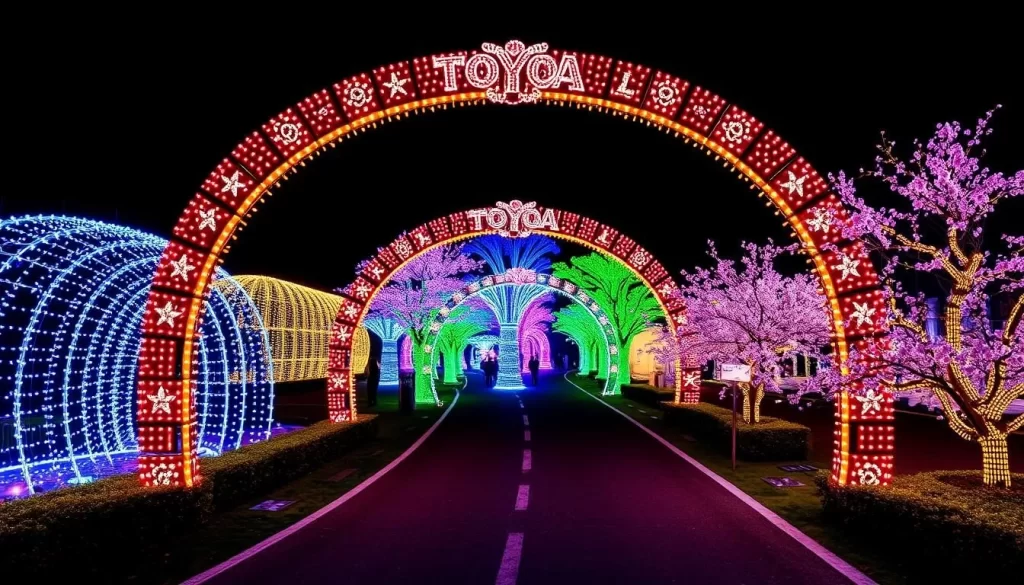
The Tokyo Mega Illumination, held at the Oi Racecourse, is a must-visit winter event. It’s Japan’s largest winter light display, transforming the racecourse into a magical wonderland with millions of LED lights. The event features spectacular themed areas like the Twinkle Tunnel, Aurora Forest, and Edo Cherry Blossom Tunnel, offering unique photo opportunities and immersive light experiences. Beyond the visual spectacle, the festival includes seasonal food stalls, musical performances, and interactive light installations, creating a comprehensive entertainment experience for visitors of all ages.
Off the Beaten Path: Unusual Attractions
To experience the unconventional side of Shinagawa, Tokyo, head to these unusual attractions that offer a fresh perspective on this vibrant district.
Suzugamori Execution Grounds: Dark Tourism
The Suzugamori Execution Grounds is a historical site that served as a place of execution during the Edo period. This somber location provides a glimpse into Japan’s dark past, attracting those interested in history and dark tourism. Visiting this site can be a sobering experience, offering insights into the historical practices of the time.
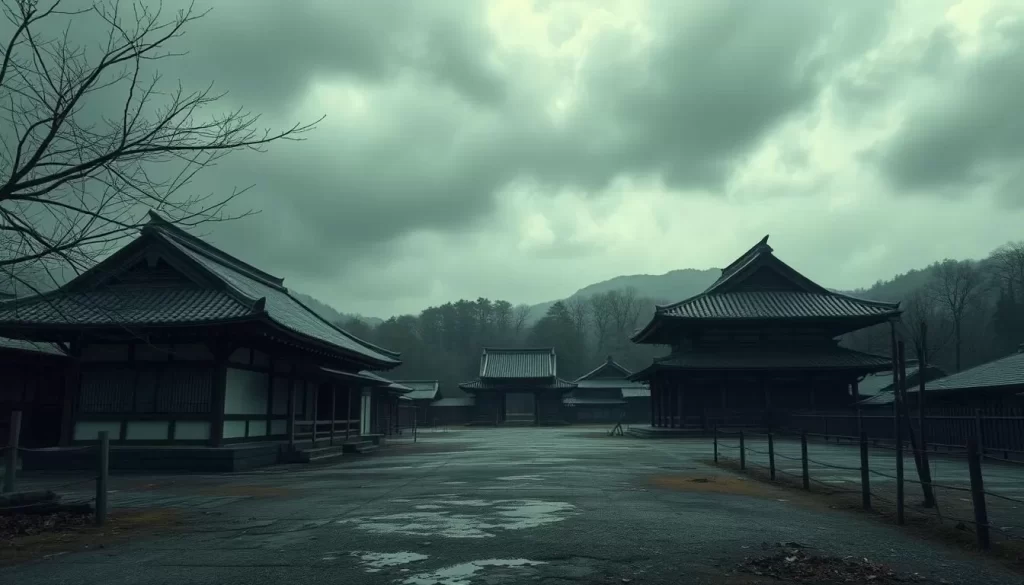
Museum of Package Culture
Ever wondered about the complex packaging that protects your latest purchase? The Museum of Package Culture is dedicated to the art, science, and history of product packaging. You’ll discover a wide range of exhibits showcasing traditional Japanese wrapping techniques to modern industrial packaging solutions, highlighting Japan’s unique way of elevating everyday packaging to an art form. With interactive displays, you’ll learn how packaging serves multiple things, from protection to cultural expression. Although the museum has limited English signage, its visual nature makes it an accessible spot for international visitors. Best of all, admission is free, making it an excellent place to visit.
This museum is indeed a spot that showcases Japan’s attention to detail in packaging, making it a must-visit for those interested in design and manufacturing.
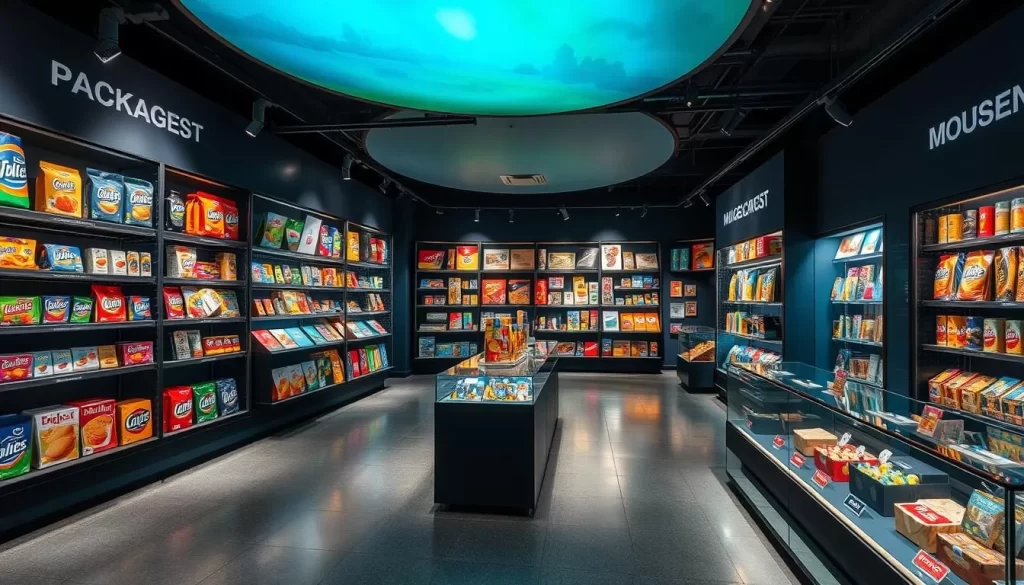
Where to Stay in Shinagawa
Shinagawa offers a diverse range of accommodations to suit every traveler’s needs, from luxury hotels to budget-friendly options.
Luxury and Business Hotels
For travelers looking for high-end amenities and services, Shinagawa has several luxury and business hotels that cater to their needs. The area around Shinagawa Station is home to several reliable business hotel chains like Toyoko Inn, APA Hotel, and Hotel Mystays, providing clean, efficient rooms at reasonable rates. Toyoko Inn Shinagawa Tennozu Isle stands out as a particularly good option, offering slightly more spacious rooms than the chain’s standard properties, plus amenities like a beer garden and courtyard.
You’ll discover that Shinagawa offers excellent value accommodations that cater to both business travelers and tourists looking to maximize their budget in this expensive city.
Budget-Friendly Accommodations
Most budget accommodations in Shinagawa are conveniently located within minutes of train stations, making it easy to explore Tokyo without spending extra on transportation. Even at the lower price points, Shinagawa’s hotels typically maintain Japan’s high standards for cleanliness and service, offering amenities like free Wi-Fi, breakfast options, and helpful multilingual staff.
The area is home to several affordable options, ensuring that you can find a comfortable place to stay that fits your budget.
Conclusion: Making the Most of Your Shinagawa Visit
With its perfect balance of convenience and authentic experiences, Shinagawa is an ideal base for exploring Tokyo. You’ll discover that this district offers a unique blend of historical sites, modern attractions, and cultural insights that can enhance your overall trip to Japan.
To make the most of your experience in Shinagawa, consider planning your trip according to the seasons. Visiting during cherry blossom season to enjoy the Meguro River, summer for the aquarium and park activities, or winter for the Tokyo Mega Illumination can significantly enhance your visit. The district’s excellent transportation connections provide an efficient way to explore both local attractions and venture further into Tokyo’s famous districts.
By allocating time to both mainstream attractions like Shinagawa Aquarium and off-the-beaten-path experiences, you’ll gain a nuanced understanding of this multifaceted district. Whether you’re a first-time visitor or a returning traveler, Shinagawa rewards exploration with cultural insights, culinary delights, and memorable encounters that will enrich your experience.
The blend of historical sites, modern attractions, green spaces, and dining options means you can customize your visit to match your interests. As you conclude your visit to Shinagawa, you’ll likely appreciate Tokyo’s layered complexity and the way this district encapsulates many aspects of Japanese urban life, making the most of your time in this vibrant city.
The above is subject to change.
Check back often to TRAVEL.COM for the latest travel tips and deals.
Here are some Tours & Sightseeing suggestions that might pique your interests!
